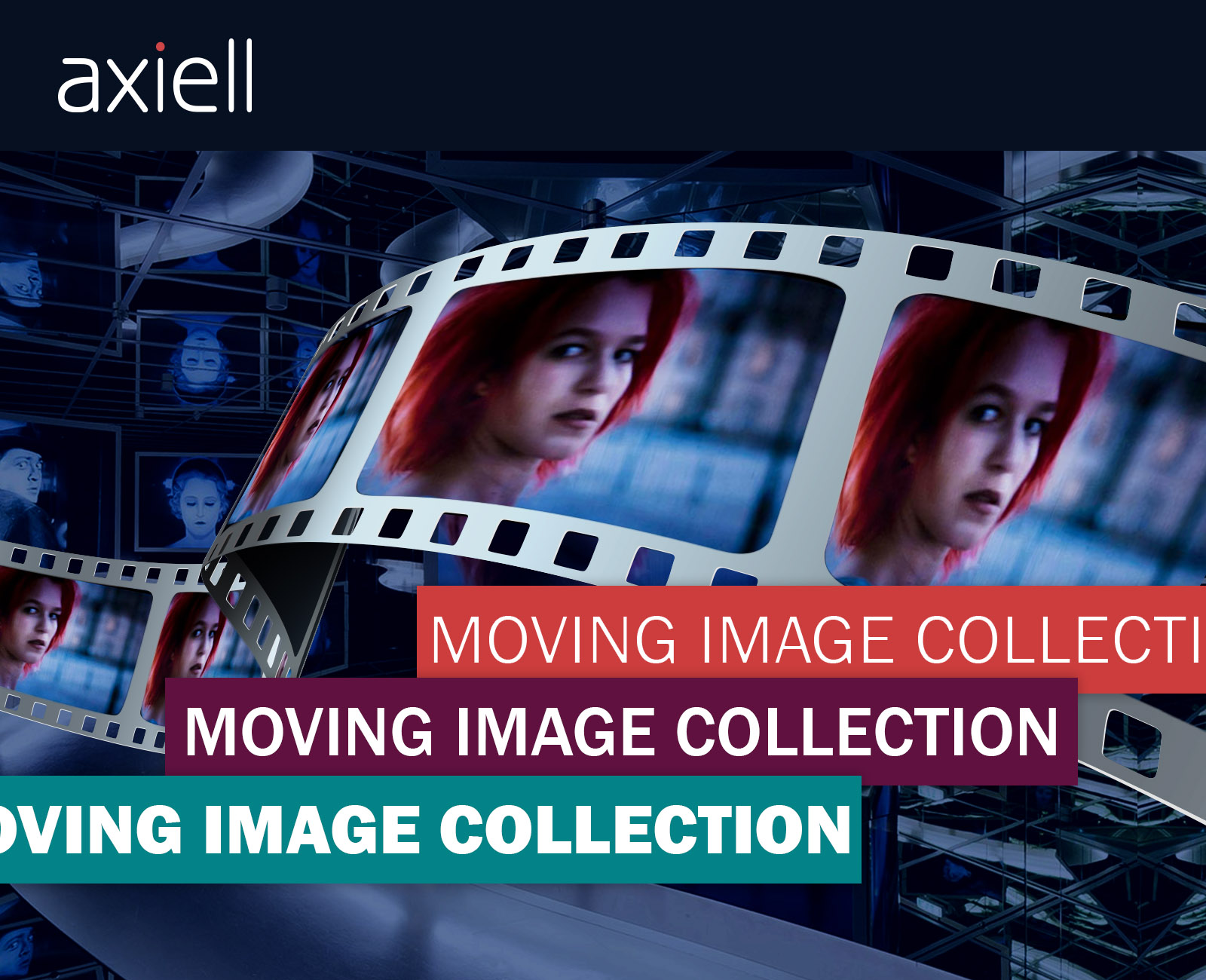In 2020, we spoke with Product Expert, Rene van den Heuvel to understand how his team was redesigning Axiell’s flexible film archive solution to be more accessible to medium and small institutions. These efforts resulted in a standardised film archive solution purpose-built, affordable, and scalable. This off-the-shelf solution is tailored to the budget, staff resources, and collection demands of small and medium-sized institutions. Check out the full interview here.

Today, we sit down with Rene to understand how the film archive landscape is evolving, especially with digital-born content and the adoption of AI.
Since your 2020 work with the British Film Institute and the Swedish Film Institute, what changes have you seen in the film archive sector?
One of the most significant changes has been the dramatic rise in digital-born content. We’re seeing more and more institutions dealing with exponentially growing volumes of digital broadcasts, transcripts, and multimedia assets. This shift has fundamentally changed the type of challenges archives face—especially around metadata. Traditional manual methods for managing metadata are important but challenging to scale.
Managing metadata for moving image collections can be uniquely complex. A single work can involve not just the film itself, but also trailers, stills, scripts, broadcast data, subtitles, transcripts, and more. Much of this information is unstructured—especially when it comes from born-digital sources like news footage or streaming content. Manually generating this level of metadata is time- and resource-intensive—often unfeasible for large archives. AI allows institutions to scale metadata creation without scaling staff.
How is Axiell adapting to these changes?
We’ve introduced AI into our Axiell Collections platform, starting with a project that involved the British Film Institute (BFI). The focus was on metadata extraction from unstructured text—specifically, transcripts of news broadcasts. These are essentially just blocks of plain text, but they’re rich with valuable information.
Our AI tool processed around 500 broadcast records, which translated into nearly half a million words of raw text. From that, the system extracted 15,000 new keywords for evaluation. This level of data enrichment has the potential to significantly improve the records’ searchability. It’s a game-changer for making this kind of content discoverable.
Check out our deep dive into this BFI collaboration.
What does the AI tool actually do?
It performs entity recognition—identifying names, places, and events—and links those to known entities in Wikidata. We also calculate a reliability score for each link, helping users gauge the confidence level of each AI-generated keyword. For high-volume collections, users can even auto-approve results above a certain confidence threshold, streamlining the entire metadata enhancement workflow.
We’ve heard Stephen McConnachie of BFI discuss the significance of their DAMs integration. How does this integrate with digital asset management systems (DAMS)?
Most archives use a DAMS to store the media itself—video, images, etc.—while Axiell Collections manages the metadata. Our system integrates with a range of DAMS so that metadata created or enhanced via AI can be linked back to the media assets, ensuring findability across platforms. Metadata might live in Axiell Collections, while the digital files remain in a DAMS.
Are there plans to expand AI capabilities beyond text?
Definitely. The first project focused on text-based entity recognition, but we’re already exploring use cases around computer vision. Imagine being able to analyze still images or video frames based on mood, color, or specific objects. One day, you might be able to search a film archive visually—not just by keywords, but by the emotional tone or composition of a shot. Nothing is finalized; while our innovation team is eager to build out the next phase of AI features, we really focus on building with real customer use cases. This helps us to ensure we’re innovating in a meaningful way for our customers but also the cultural heritage sector, in general.
How are film archives using Axiell Collections’ broader platform?
What’s great is that our film archive customers don’t just use the film-specific functionality. They can manage everything—library collections, museum objects, traditional archives—in one integrated platform. That means any improvement we make to the system benefits them too, from license and rights management to the new mobile app for location tracking. BFI, for instance, uses our open API extensively. On their website, you’ll find maps and visual tools built by the BFI team using the metadata in Axiell Collections, enhancing public engagement while streamlining internal workflows. That’s the kind of flexibility we’ve become known for.
My understanding is that the license and rights management module is particularly compelling to moving image collections. Can you share a bit more about why this is the case?
Absolutely—license and rights management is a crucial feature for moving image collections, and Axiell Collections’ module in this area is especially compelling because it addresses both the operational complexity and legal sensitivity of audiovisual content. Moving image collections often contain layered rights: copyright on the footage, separate rights for music, voiceovers, archival inserts, and even talent contracts. Axiell’s module allows you to associate multiple rights records with a single asset—making it easy to track who owns what, under what terms, and for how long.
Because Axiell Collections manages the full context around each asset—including related records like contracts, creators, and usage history—your rights information isn’t siloed in a separate platform and this helps archivists quickly understand the licensing landscape without digging through external files or folders. As more collections go online or integrate with DAMS and streaming platforms, the need to automate rights clearance and tracking becomes essential. Axiell’s open architecture means the rights module can be part of a larger workflow that connects metadata, DAMS, and public portals.
So, what’s next?
More AI, definitely—but always focused on customer challenges. We’re not building technology for its own sake. We’re looking for real-world problems to solve and inviting customers to be part of the journey. Next week we’re attending the FIAF Congress and it’ll be interesting to share our work, hear from the community on how AI is already showing up in their conversations, and of course, think about our own roadmap.
Learn more about our film archive and moving image collection solution here or reach out directly to our team to schedule a demo.




